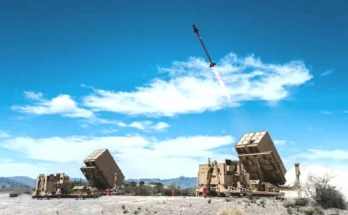by Derek Bisaccio, Military Markets Analyst, Forecast International.

Ahead of U.S. Secretary of State John Kerry’s trip to Moscow, The Washington Post published a leaked copy of an apparent U.S. proposal to deepen cooperation between the U.S. and Russia regarding the conflict in Syria, where both countries’ militaries are carrying out air missions.
The document proposes a “Joint Implementation Group” (JIG), based in Jordan, to focus on fighting both Jabhat al-Nusra (al-Qaeda’s Syrian branch) and the Islamic State. The JIG would serve as a basis for coordinating both the U.S. Air Force’s and Russian Aerospace Force’s activities over Syria.
Throughout Russia’s deployment to Syria, the U.S. has criticized Moscow by asserting that Russian jets are primarily focused on “moderate” rebel factions fighting Syrian President Bashar al-Assad, rather than targeting extremist groups like the Islamic State. Russia generally denies these claims and argues the U.S. is hypocritical in that it is blocking efforts to label some al-Qaeda-linked militant groups, such as Harakat Ahrar al-Sham, as terrorists.
The JIG would, if adopted, seek to rectify these issues by delineating on a map where the territories of valid targets – primarily the Islamic State and Jabhat al-Nusra – are while distinguishing areas belonging to opposition groups. The JIG proposal would “include areas where Nusra formations are in close proximity to opposition formations, for precise target development.”
Beyond just delineating the location of various militias, the JIG would designate set targets for the American and Russian militaries as well as seek to restrict the activities of the Syrian Air Force to missions in line with the cessation of hostilities (CoH), a ceasefire effort pushed earlier in the year that has largely collapsed on many fronts.
Ultimately, the JIG seeks a return to the CoH, with an aim toward the “translation of the CoH into a durable, nationwide ceasefire.” Assuming successful implementation, the JIG proposal is intended to pave the way for a return to peace negotiations between the government and the opposition.
Among several other items on the agenda, Secretary of State Kerry was reportedly due to discuss the JIG proposal with Russian President Vladimir Putin on July 14. The Kremlin, however, has downplayed the visit, saying afterward that Secretary of State Kerry did not talk with President Putin about direct military cooperation in Syria.
Ahead of a meeting with Russian Foreign Minister Sergey Lavrov, Secretary of State Kerry did not indicate whether the JIG proposal had been mentioned, but did say in regard to Syria, “I look forward to building on the conversations that we had last night, on the conversations we’ve had in previous months.”
It remains unclear if the JIG, or even direct military cooperation at all, will be enacted between the U.S. and Russia over Syria. But the leaked JIG proposal set a fairly optimistic timeframe – July 31, 2016 – for furthering cooperation between the two, which suggests that efforts to deepen cooperation are at an advanced stage.
Given the high degree of difference between the American and Russian objectives in Syria, the subject of military cooperation between the two is a matter of intense debate in U.S. President Barack Obama’s administration. Particularly after months of U.S. criticism of Russia for propping up President Assad and allegedly killing large numbers of civilians, the JIG proposal is looked at by some in the U.S. government as a reversal in the U.S. approach to Syria.
There are numerous ways for the JIG or a similar plan to fall apart, particularly if disputes over the territory of valid targets continue. Secretary of State Kerry hinted in recent days that Washington is moving closer to Russia’s stance regarding what he called al-Qaeda “subgroups” Harakat Ahrar al-Sham and Jaysh al-Islam, but stern denials from the State Department indicate that there may continue to be a divide between Washington and Moscow regarding which groups can be considered valid targets.
Though the JIG seeks to restrain the Syrian Air Force from carrying out attacks inconsistent with the CoH, such as targeting legitimate opposition groups, it is likely that the burden of enforcing this would fall on Russia, which itself has been repeatedly criticized for bombing opposition forces.
Even so, the JIG proposal marks an important milestone in the relationship between Russia and the U.S. over Syria. Ultimately, the U.S. proposal hopes to improve conditions in order for political negotiations regarding Syria’s future to continue and recognizes that cooperation with Moscow is crucial toward achieving this goal.
Please feel free to use this content with Forecast International and analyst attributions, along with a link to the article. Contact Ray Peterson at +1 (203) 426-0800 or via email at ray.peterson@forecast1.com for additional analysis.
The Forecast International International Military Markets series examines the military capabilities, equipment requirements, and force structures inventories of 140 countries, with corresponding coverage of the political and economic trends shaping the defense market outlook for individual countries and regions.
For 50 years, Forecast International intelligence reports have been the aerospace and defense industry standard for accurate research, analysis, and projections. Our experienced analysts compile, evaluate, and present accurate data for decision makers. FI's market research reports offer concise analysis of individual programs and identify market opportunities. Each report includes a program overview, detailed statistics, recent developments and a competitive analysis, culminating in production forecasts spanning 10 or 15 years. Let our market intelligence reports be a key part of reducing uncertainties and mastering your specific market and its growth potential. Find out more at www.forecastinternational.com




